Top 5 things to do in Botswana.
Top 5 unmissable experiences from our Botswana expert
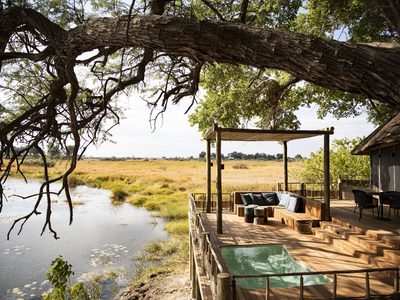
Spend time with the bushmen.
Although Botswana has an incredibly interesting history and culture it can often be difficult to experience this when on safari. This is due to many of the camps being so remote that much of the Botswana safaris industry is based on a fly in/fly out model, meaning cultural experiences are few and far between.
That being said if you head down to some of the drier semi-arid desert areas such as the Central Kalahari Game Reserve, Nxai Pan National Park or in particular the Makgadikgadi Pans National Park then you will have the opportunity to spend time learning about the Zu/’hoasi bushmen.
The Zu/’hoasi bushmen hold knowledge which has been passed down over thousands of years through generations which means they are able to make survival in such a harsh and demanding environment and make it look easy.
I was lucky enough to spend nearly 3 years living with the Zu/’hoasi bushmen whilst working as a guide at Jacks Camp in the Makgadikgadi, going on walks and having them come with me when guiding guests to help track lion or cheetah in the mornings. Although verbally we couldn’t communicate, we managed to understand each other through gestures and a love for the environment we lived in.
If guests staying with us were lucky enough, they may have been able to whiteness or even take part in a trance dance. This age-old tradition is a very moving experience and a privileged to witness. The trance dance is a healing dance in which the women sit around the fire singing and clapping creating the pace and rhythm for the men to then dance around the fire, often very close or even touching it.
As the heat, rhythm, dancing and clapping all come together the men will enter a trance like state which is used to draw any illness or bad energy out of whoever they place their hands on whilst in this state. I have been lucky to be a part of many of these. Sometimes they lasted 2/3 days and when laying in my tent I could hear them continue into the night, strangely lions would always visit camp on that night or the day after a trance dance took place.
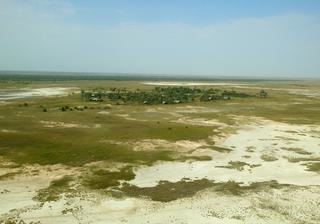
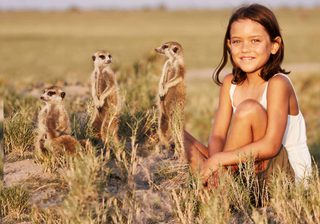
Visit the Okavango and mokoro along its waterways.
Often described as Africa’s Garden of Eden, the Okavango Delta is an integral part of any Botswana safari. Due to Botswana’s approach as a high cost low volume tourism destination, combined with an extremely low population, much of Botswana’s wilderness is remote, pristine and full of incredible wildlife.
The Okavango Delta changes in size on an annual basis going from roughly 6,000 square kilometres to 15,000 square kilometres. This change is due to flood waters coming down from the highlands of Angola and flowing along the Okavango River, filling up the Okavango Deltas tributaries and flood plains. Unless you are on one of the main, year-round flowing tributaries in the Delta, the best time to visit camps which have mokoro activities is between April and October.
The mokoro is essentially a wooden canoe roughly 20ft long which has been crafted from the trunk tree. Although a number of trees can be used, Sausage trees, Mangosteens and Jackalberrys are preferred. The pole (ngashe) used for pushing the mokoro is long and straight and usually made from the silver leaf terminalia. Throughout history Mokoros have been used by the inhabitants of the Okavango Delta for fishing and moving through the waterways, lagoons and reedbeds. Although they look unstable after using these from an early age fisherman make it look easy.
This really is an incredible way to see the Okavango and with no engine noise it gives you a great chance to discreetly drift past the huge numbers of birds and animals.
The Okavango Delta is undoubtedly a special place to me and holds very fond memories from my childhood all the way through to today. Over 20 years on I go back every year and remember each individual sighting in every tree, especially around the Khwai/Moremi area, so it would definitely be one of my top things to do.
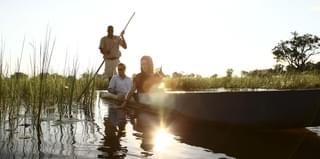
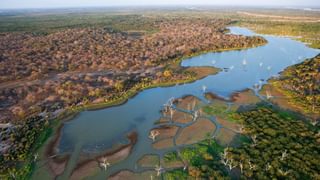
Combine the Western and Eastern part of Chobe National Park
When I think of the Chobe National Park, I picture the lush areas in the North East and the banks of the Chobe river with huge numbers of elephant coming down to drink and cool off in the afternoons. Too often I see the areas in the west of Chobe national park such as Savute missed off itineraries due to them being less well known. When combined both of these areas complement each other extremely well.
Although Chobe National Park covers about 11,000 square kilometres the majority of camps are located in North East not far from Kasane along the Chobe River front or in the more remote part of Savute, much of the area in between is inaccessible and sparse during the dry months.
The Savute Channel on the western border of Chobe national park stretches from the Linyanti River south to the Savute Marsh. This channel often goes through extended dry periods and will then suddenly flow again. This inconsistency often means your trip to Savute can be a mystery until you arrive. This area is particularly well known for its predators, especially lions and hyenas.
This area is much more remote but well worth combining on a trip, whether it’s a self-drive heading north east from the Okavango or stopping off on a fly in safari between the Victoria Falls/Chobe river front and the Okavango Delta. Due to is position with the Selinda Reserves to the West, Okavango Delta to the South and untouched expanses of Chobe to the East its game viewing is world class.
To the North East of Chobe National Park you will find the small town of Kasane, this is known as the gateway to Chobe. With the some of the widest parts of the river flowing through here, it is a great location for houseboat stays and also river cruises.
The birdlife and photography safaris are particularly good. If you are looking to experience some Botswana wildlife combined with Zimbabwe, Zambia or Namibia without the expense of a flying safari into the delta this is a brilliant place to start. Its location just across the border from Victoria Falls also provides the opportunity to visit them on a day trip from Kasane.
Combing both the Eastern side of the Chobe and the Western side of Chobe can provide a really diverse experience of wet and dry as well as different levels of remoteness.
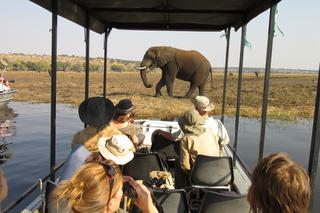
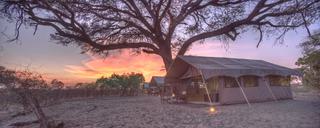
Join a family of meerkats
Many of you may have seen the similar pictures to below of a Meerkat sitting on someone’s head, there is a very good chance that these were taken in the Makgadikgadi.
There are 3 camps in the region which provide the opportunity to follow and spend time with completely wild meerkats offering a rare insight into their lives and natural behaviour. Jacks Camp, San Camp and Camp Kalahari provide a great base to make the most of this experience and the Makgadikgadi desert.
You may ask how can you get so close to wild animals? These families of meerkats have been in the area for years and have got used to the presence of human beings and becoming habituated. This does not affect their natural behaviour at all.
In a land which is very flat and full of predators Meerkats rely on a strong family group. Communication and vigilance is key. Family group size increases vigilance but can also provide less resources, so if it gets too big, individuals will break off to form new groups.
Observing their behaviour you will notice that at any point there will be at least one adult which is not feeding or foraging and will stand on 2 legs on the nearest high point on the lookout for predators. With predators ranging from birds of prey, jackals and snake to smaller cats, family group will often protect themselves by staying in different burrows that they rotate between depending on which area they are feeding in. throughout their days hunting they will also never be too far from a bolt hole in case of a threat.
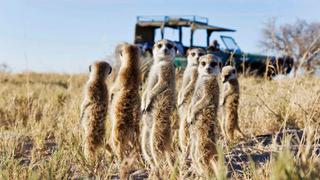
Sleep under the stars.
Sleeping under the stars is becoming increasingly popular with several camps now offering the experience.
Historically the chance to sleep under the stars was only found in desert based camps such as Kalahari Plains, Tau Pan and the Makgadikgadi based properties. However as this becomes a more popular, a number of camps in the Okavango and surrounding areas now offer the opportunity to either slide your bed out under the stars or even go with your guide to a completely different, raised platform where you can watch the stars move across the sky and listen to the sounds of the bush in safety knowing your guide is not far away making sure you are comfortable. Camps which offer this experience are Kanana, Sky Beds, Baines Camp, Tau Pan, Jacks Camp, San Camp, Camp Kalahari, Hyena Pan, Sable Alley, Linyanti Expeditions and Kalahari Plains.
Although this isn’t for everyone, especially people who are already nervous and are often on safari for the first time, I could not recommend the experience highly enough. It has been listed in the book 100 things to do before you die and having been lucky enough to do this a number of times, I can vouch for this. For all the right reasons these are some of the most sleepless nights I’ve had and also some of the best night’s sleep I’ve had.
During my time guiding at Jacks Camp and San Camp this was an experience we could only offer during certain times of the year due to the weather conditions so in order to make sure you are able to do this during your trip, mention it during your initial enquiry, this will enable your consultant to base your trip around camps offering the experience.
These are often best booked at the time of your reservation, with only one platform per camp be sure to make sure this is built into your itinerary.
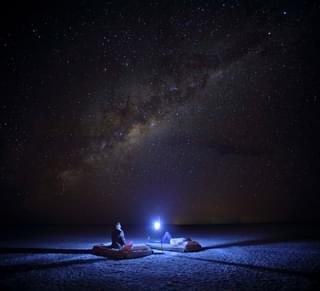
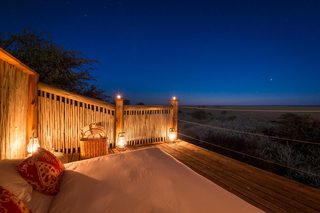
Wondering when to visit? Take a look at this guide on the best time to visit Botswana.
Looking for some more inspiration? Take a look at our best safari holidays ideas, our favourite family safaris, our big five safari guide or our top African safari honeymoon suggestions.
This blog gives you a handful of my favourite Botswana activities but of course there are many more wonderful things to do from fishing through to mobile and walking safaris.
To find out more about Botswana, give us a ring today and I’ll happily tell you more about everything there is on offer!






























